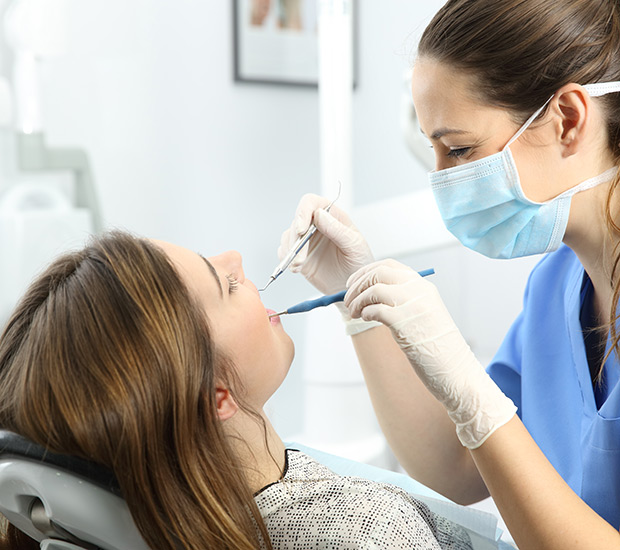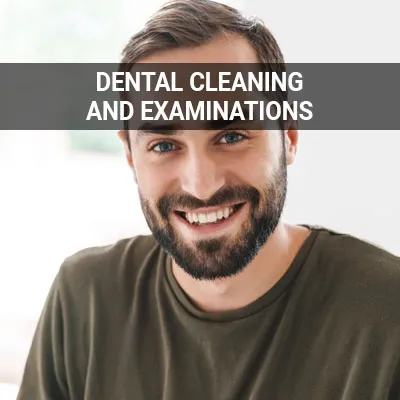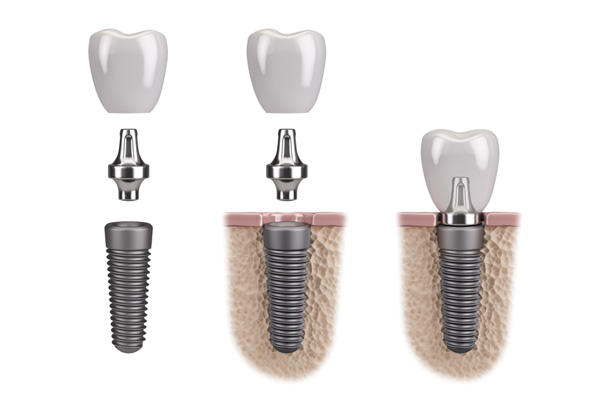What Does a Dental Hygienist Do Federal Way, WA
One of the people you will likely spend the most time with at the dentist's office is the dental hygienist. Dental hygienists work in tandem with the dentist to meet a patient's oral health needs. Their duties vary but often include patient screening and education, taking X-rays, removing plaque from teeth, and doing a thorough cleaning and polishing. They will also conduct a complete examination of your teeth and alert the dentist to any areas of concern.
Dental hygienists act as a bridge between the dentist and the patient at Smile Center Dental Care in Federal Way and the surrounding area. Call us at (253) 336-0023 to schedule an appointment or to learn more.
Dental Hygienist Training and Certification Process Details
In order to become a dental hygienist, a candidate must first complete a college program in dental hygiene. Students in the program may earn an associate degree at a community college, a bachelor's degree at a four-year university, or a graduate degree. Admissions to programs in dental hygiene usually require a background of high school courses in science.
After completing the academic college-level courses, dental hygienist candidates must then complete a supervised clinical experience with patients. Once the program is finished, dental hygienists must earn their state license in the practice. According to the American Dental Association, some states also require candidates to earn a passing score on the National Board Dental Hygiene Exam.
“After completing the academic college-level courses, dental hygienist candidates must then complete a supervised clinical experience with patients.”
Patient Screening and Technology
Dental hygienists are typically responsible for patient screenings. Before the dentist comes in to do their exam, the hygienist will look for signs of tooth decay and gum disease. Those findings will then be reported to the dentists before they begin. Additional screening procedures may include:
- Oral cancer screening
- Patient health history
- Heath and neck inspection
- Blood pressure and pulse
Dental hygienists also use several tools to complete a patient visit. They may use basic tools such as a mirror, as well as power and ultrasonic tools to clean and polish teeth. X-ray machines check for issues with the teeth and jaws. Some of the more advanced tools can include an intraoral camera and an ultrasonic scaler that uses vibration to gently remove plaque from the teeth.
“Before the dentist comes in to do their exam, the hygienist will look for signs of tooth decay and gum disease.”
Patient Counseling
Patient counseling is often an important component of a dental hygienist's job. Patients who have avoided the dentist chair for a while might be nervous during their appointment and come in with missing teeth, cavities, or serious gum disease. Many patients do not know proper oral care and maintenance beyond brushing and flossing.
Dental hygienists can help make the patient feel more comfortable during their appointment and provide education on how to better care for their teeth between visits. Patient counseling can also include help after treatment, such as providing any post-procedure instructions or restrictions.
“Patient counseling is often an important component of a dental hygienist’s job.”
Check out what others are saying about our dental services on Google: What Does a Dental Hygienist Do in Federal Way, WA
When a Dental Hygienist Treats Patients
Dental hygienists are usually involved in a patient's regular, routine cleaning appointment. It is vital to schedule periodic appointments according to the dentist's recommendations. During a standard appointment, the patient may start treatment with the dental hygienist. Here are the parts of the visit where a dental hygienist may be involved:
- Health History: Before starting any examination or cleaning, the dental hygienist may first review the patient’s health and history. The dental provider reviews the patient’s dental records and health information. Then, the provider may discuss the patient’s concerns before going to the next step of the appointment.
- Teeth Cleaning: Next, the dental hygienist cleans the teeth. They may use a professional polisher to remove build-up and stains on the enamel. They also use tools to remove tartar and plaque from the teeth and the gum line.
- Fluoride Treatment: Some dental hygienists may provide preventative services during a routine visit. Fluoride treatment helps keep the teeth healthy and strong. Dental sealant application to prevent tooth decay may also be part of a routine appointment.
“Before starting any examination or cleaning, the dental hygienist may first review the patient’s health and history.”
Questions Answered on This Page
Q. What is a dental hygienist's training and certification process entail?
Q. What parts of treatment do dental hygienists help with?
Q. What sort of counseling does a dental hygienist provide?
Q. What parts of the dental visit are dental hygienists involved with?
People Also Ask
Q. How often should someone have a dental checkup?
Q. Why is routine dental care important?
Q. How can I find out if my employer's plan covers dental treatments?
Q. What family members may need extra help with their oral hygiene?
Q. Why are dental cleanings important?
Dental Hygienists and Your Visit
Dental hygienists are involved in just about every clinical aspect of patient visits. Dental hygienists perform many of the preventative dental procedures done in an office, such as teeth cleaning, screening for oral disease, and other preventative dental care. Once a patient is checked in, the hygienist is typically the person who will lead them to the exam room. After they are settled into the dentist's chair, the dental hygienist will ask questions about the patient's health history and see if there are any concerns regarding their teeth or jaw. If X-rays are needed, the dental hygienist will administer them before the cleaning begins.
After the documentation is handled, they will take various measurements to check the health of their gums, remove plaque and tartar, and do a thorough cleaning and polishing of the teeth, followed by flossing. When the dentist arrives, the dental hygienist will let them know if there are any areas of concern and then help with various aspects of the dental exam. Following the exam, the dental hygienist will answer any questions and update the patient's chart. They can also take impressions of the teeth if needed for crowns, implants, dentures, or mouth guards.
“Dental hygienists are involved in just about every clinical aspect of patient visits.”
Frequently Asked Questions About a Dental Hygienist
Q. What is the difference between a dental hygienist and a dentist?
A. Dental hygienists and dentists have very different roles within a dental practice. A dental hygienist will conduct oral screenings, update your patient information, take x-rays, do a thorough cleaning, and look for potential problems. The dentist will come in following the cleaning to do an exam and will also handle more complicated procedures.
Q. What sort of training do dental hygienists have?
A. Dental hygienists have graduated from an accredited dental hygiene program and have taken and passed state exams to receive their license. During their studies, dental hygienists take classes in head and neck anatomy, pathology, nutrition, and medical ethics. Most programs take about three years to complete.
Q. What do dental hygienists do?
A. Dental hygienists have several different roles in an office. They can assist the dentist during procedures, update the patient's chart, show patients how to care for their teeth, perform oral health screenings, and remove plaque from the teeth. They can also apply fluoride and sealants to teeth as well as take impressions.
Q. What is the difference between a dental assistant and a dental hygienist?
A. It can be easy to confuse dental assistants and dental hygienists as they perform many of the same duties. Dental assistants can take x-rays, prepare instruments and equipment, take impressions of the teeth, and assist the dentist during procedures. However, unlike dental hygienists, they do not collect patient health history, remove plaque from the teeth, apply sealants or fluoride, or do any patient documentation.
Q. Does a dental hygienist receive certification or licensure?
A. Dental hygienists must complete at least an Associate's degree in dental hygiene. They must then pass the National Board Dental Hygiene Examination (NBDHE) in order to achieve licensure. This exam is the only one required by all 50 states.
Dental Terminology
Call Us To Schedule Your Next Appointment With a Dental Hygienist
If you want to improve your dental health, call us at 253-336-0023 for an appointment with a dental hygienist. Get started on a treatment plan that focuses on strong teeth and preventative strategies. Our team in Federal Way is ready to help you achieve optimal oral health.
Helpful Related Links
- American Dental Association (ADA). Glossary of Dental Clinical Terms. 2024
- American Academy of Cosmetic Dentistry® (AACD). Home Page. 2024
- WebMD. WebMD’s Oral Care Guide. 2024
About our business and website security
- Smile Center Dental Care was established in 2005.
- We accept the following payment methods: American Express, Cash, Check, Discover, MasterCard, and Visa
- We serve patients from the following counties: King County and Pierce County
- We serve patients from the following cities: Federal Way, Auburn, Kent, Des Moines, Tacoma, Fife, Milton, Edgewood, SeaTac, and Algona
- National Provider Identifier Database (1770035289). View NPI Registry Information
- Norton Safe Web. View Details
- Trend Micro Site Safety Center. View Details
Back to top of What Does a Dental Hygienist Do










